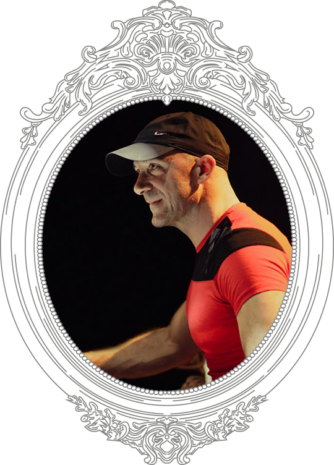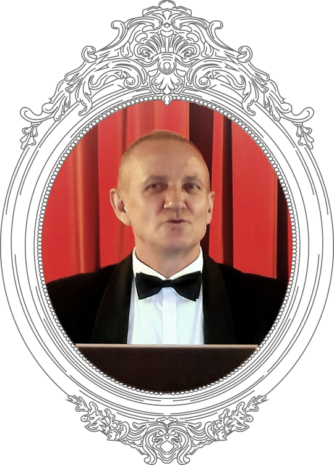DJs
Tatiana TatiVany
Tanguera, tango teacher and tango DJ (Kyiv, Ukraine).
My passion for tango music appeared immediately, and from the first milonga I was impressed by it. I have been dancing at milongas and tango festivals in the USA and Europe for over 10 years. During my trips to Buenos Aires, I reached back to the roots of tango music, I wanted to understand what tango is/was for porteños? How did the Argentines create? How has tango music changed over the years? Six years ago I started DJ-ing believing that a good DJ combines the tradition, the knowledge of tango music, and understanding of dancers, among other things.
Interpreting the music could be exciting or challenging for dancers. As a tango DJ, I want to see all dancers enjoying themselves at the dancefloor, each of us with our own experience and expectations. I aim to see that the music connects people at milonga, whether they are dancing, listening or just enjoying the evening. Then the magic of the milonga happens. Then Tango happens.


Dagmara Pilaszek
DagKa La Polaca) spent many years working in the Balkans. He has been dancing tango since 2005. Following the principle: if there is no tango – organise it! She initiated Argentine tango in Sarajevo where she opened her first milonga “Pocas Palabras”, in 2011, where she started her adventure with DJing. She played at milongas and festivals in Europe (Macedonia, Greece, Bosnia and Herzegovina, Poland), as well as at marathons, festivals and milongas in Argentina (Cordoba, La Plata, Buenos Aires, Tandil) and Chile. “I like the golden era and there’s nothing I can do about it” – Dagmara always looks at what’s happening on the dance floor, empathizes with the mood of the dancing couples and creates dances for them on the fly, breaking stereotypes and yet ensuring that every sound makes your heart beat to dance.
Patxi Manez
Passionate milonguero, dancer, and Tango DJ for about 20 years. He enjoys feeling the heartbeat vibrations of every dancer on the floor. His diverse musical selections range from orchestras of the “Guardia Vieja” era to more contemporary sounds of classical performers from the “Golden Age,” forming the foundation of his curated playlists. In his musical choices, he often includes pieces from Canaro, D’Arienzo, Di Sarli, and Troilo.
Currently residing and working in Alicante, Spain, you can regularly find him and listen to his tunes at the Milonga “Lo de Toya.” He is also a frequent guest DJ at affiliated milongas and tango events in the region.


Paweł Biel
I usually play hard and using the entire spectrum of extremes. I adore Biaggi, OTV and d’Arienzo, but also Calo and Maderna. And on top of all this, I admire Orquestra Romantica Milonguera and Tango Bardo, and I still can’t appreciate Donato
I understand convention and doctrine, but I can deliberately break it if I feel the dancers will appreciate it. I sometimes mix various orchestras of a similar nature in a tanda, and I consider cortinas to be one of the key elements creating the atmosphere of the event. Above all, the mood is important to me at any time and I am able to correct my idea for the next tandas at any time in order to please the audience even more.
Mateusz Stach
Tango has been with me for 12 years. I started dancing and djing in Brzeg, where one of the biggest festivals in Poland- Magic of Tango- was held for many years. My passion was born there, my playing began at this magical festival, where at the beginning I played at all milongas.
I play as I feel in my heart, I dance as the music flows, listening to every phrase, every instrument. To create a magical atmosphere, I watch the dancers, feel the emotions, and adjust my playing.
The festival in Brzeg, where I was also its co-organizer for several years, taught me a lot,developed my passion.
Nowadays I create a Magic Castle Tango Marathon in Książ on which this time I’ll try not youfail.


Marek Mućko
My adventure with tango began over a decade ago and over time it began to transform into a passion that I fell in love with. As I deepened my awareness and knowledge of dance and music, I felt the desire to share my musical tastes with other people who were equally crazy about dancing. As a TDJ, I play traditional music, but in order to meet the musical expectations of all those present, I often use interpretations by artists other than Golden Era. As for orchestras, I personally like listening to all of them because I love music. However, my favorites are: Biagi, Di Sarli, Pugliese, D’Arienzo, Tanturi. See you and dance.
M&M Magda i Maciej
A discreetly lit interior, an atmosphere of tension and mystery in the air, and on the dance floor a couple dancing with expression and sensuality and music, which is the soul of every milonga.
A magical moment when the DJ makes the entire room sing to the rhythm of the tango. He is responsible for creating the right atmosphere and selecting the right songs. Every DJ knows that music is emotions and a story told through sounds. The selection of pieces must be carefully considered to satisfy the tastes of both novices and experienced dancers. We like tango classics, but we are also not afraid to experiment with new arrangements. It is important that each song is appropriately matched to the time and energy on the dance floor – from delicate and romantic sounds to sensual and dynamic rhythms.
A magical moment when the DJ makes the entire room sing to the rhythm of the tango. He is responsible for creating the right atmosphere and selecting the right songs. Every DJ knows that music is emotions and a story told through sounds.


Krzysztof Rumiński
I’ve been running milongas since 2014. I trust that in this way I give people pleasure.
Enrique Santos Discépolo once said that tango is a sad thought to be danced. For me, tango is also a flirt with music, as well as a subtle, full of curiosity conversation between partners. (At milongas) I aim at creating a friendly, slightly nostalgic, fascinating dance journey, to which I invite milonga guests. My intention is to play so that the dancers can find themselves in the music and have a good time. I don’t have ready-made playlists. I try to carefully observe the atmosphere on the dance floor and depending on it I choose the next tandas. Sometimes, I offer well-known, much-loved melodies, occasionally more demanding for interpretation ones, and at times I find gems, in my opinion, worth being discovered. Greetings from Toruń and hope to see you in Książ.
Jorg Haubner
I base my playlists mainly on traditional music (with an emphasis on the 40s, 30s and 50s), I adapt them to the expectations of the participants and the type of event (Milonga, Festival or Marathon). A good flow between rhythm and lyrical text is very important to me.
Dancers can always trust the same mood – a soft transition within the tandas. I’m a perfectionist when it comes to the best sound I can get (sources and equipment).
